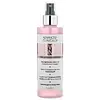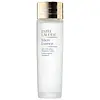What's inside
What's inside
 Key Ingredients
Key Ingredients

 Benefits
Benefits

 Concerns
Concerns

No concerns
 Ingredients Side-by-side
Ingredients Side-by-side

Water
Skin ConditioningGlycerin
HumectantPyrus Malus Fruit Extract
Skin ConditioningPEG-12 Dimethicone
Skin ConditioningSoluble Collagen
HumectantRosa Damascena Flower Water
MaskingAloe Barbadensis Leaf Juice
Skin ConditioningAcetyl Hexapeptide-8
HumectantButylene Glycol
HumectantCitrullus Lanatus Fruit Extract
Skin ConditioningLens Esculenta Fruit Extract
Skin ConditioningSodium Lactate
BufferingSodium PCA
HumectantOryza Sativa Extract
AbsorbentGlycine Max Seed Extract
Skin ConditioningDaucus Carota Sativa Root Extract
Skin ConditioningChenopodium Quinoa Seed Extract
Skin ConditioningPanax Ginseng Root Extract
EmollientTocopheryl Acetate
AntioxidantVaccinium Angustifolium Fruit Extract
Skin ProtectingIsopentyldiol
HumectantPentylene Glycol
Skin ConditioningPhenoxyethanol
PreservativeMaltodextrin
AbsorbentTetrasodium Glutamate Diacetate
Parfum
MaskingCaprylyl Glycol
EmollientEthylhexylglycerin
Skin ConditioningHexylene Glycol
EmulsifyingCitric Acid
BufferingCI 17200
Cosmetic ColorantWater, Glycerin, Pyrus Malus Fruit Extract, PEG-12 Dimethicone, Soluble Collagen, Rosa Damascena Flower Water, Aloe Barbadensis Leaf Juice, Acetyl Hexapeptide-8, Butylene Glycol, Citrullus Lanatus Fruit Extract, Lens Esculenta Fruit Extract, Sodium Lactate, Sodium PCA, Oryza Sativa Extract, Glycine Max Seed Extract, Daucus Carota Sativa Root Extract, Chenopodium Quinoa Seed Extract, Panax Ginseng Root Extract, Tocopheryl Acetate, Vaccinium Angustifolium Fruit Extract, Isopentyldiol, Pentylene Glycol, Phenoxyethanol, Maltodextrin, Tetrasodium Glutamate Diacetate, Parfum, Caprylyl Glycol, Ethylhexylglycerin, Hexylene Glycol, Citric Acid, CI 17200
Water
Skin ConditioningBifida Ferment Lysate
Skin ConditioningPEG-75
HumectantPropanediol
SolventButylene Glycol
HumectantBetaine
HumectantPentylene Glycol
Skin ConditioningLactobacillus Ferment
Skin ConditioningAcetyl Hexapeptide-8
HumectantAcetyl Glucosamine
Skin ConditioningTrehalose
HumectantCaffeine
Skin ConditioningSodium Hyaluronate
HumectantAnthemis Nobilis Flower Extract
MaskingCaprylyl Glycol
EmollientCarbomer
Emulsion StabilisingPPG-5-Ceteth-20
EmulsifyingCitric Acid
BufferingPotassium Sorbate
PreservativeSodium Citrate
BufferingTromethamine
BufferingDisodium EDTA
Phenoxyethanol
PreservativeWater, Bifida Ferment Lysate, PEG-75, Propanediol, Butylene Glycol, Betaine, Pentylene Glycol, Lactobacillus Ferment, Acetyl Hexapeptide-8, Acetyl Glucosamine, Trehalose, Caffeine, Sodium Hyaluronate, Anthemis Nobilis Flower Extract, Caprylyl Glycol, Carbomer, PPG-5-Ceteth-20, Citric Acid, Potassium Sorbate, Sodium Citrate, Tromethamine, Disodium EDTA, Phenoxyethanol
Ingredients Explained
These ingredients are found in both products.
Ingredients higher up in an ingredient list are typically present in a larger amount.
Acetyl Hexapeptide-8, commonly known as Argireline or Acetyl Hexapeptide-3, is a popular peptide in skincare. It’s often referred to as a “Botox-like” ingredient because it helps reduce muscle movement.
By relaxing these micro-movements, Argireline may help minimize the appearance of fine lines and wrinkles. That said, it’s not as powerful as Botox, and research on its long-term effectiveness is still limited.
Beyond smoothing, Argireline may also support collagen production. Collagen is the protein that helps keep your skin firm, bouncy, and well-hydrated by strengthening the skin barrier.
So while Argireline isn’t a miracle fix, it can be a helpful addition to a routine focused on both prevention and skin health.
Read more about other common types of peptides here:
Learn more about Acetyl Hexapeptide-8Butylene Glycol (or BG) is used within cosmetic products for a few different reasons:
Overall, Butylene Glycol is a safe and well-rounded ingredient that works well with other ingredients.
Though this ingredient works well with most skin types, some people with sensitive skin may experience a reaction such as allergic rashes, closed comedones, or itchiness.
Learn more about Butylene GlycolCaprylyl Glycol is a humectant and emollient, meaning it attracts and preserves moisture.
It is a common ingredient in many products, especially those designed to hydrate skin. The primary benefits are retaining moisture, skin softening, and promoting a healthy skin barrier.
Though Caprylyl Glycol is an alcohol derived from fatty acids, it is not the kind that can dry out skin.
This ingredient is also used as a preservative to extend the life of products. It has slight antimicrobial properties.
Learn more about Caprylyl GlycolCitric Acid is an alpha hydroxy acid (AHA) naturally found in citrus fruits like oranges, lemons, and limes.
Like other AHAs, citric acid can exfoliate skin by breaking down the bonds that hold dead skin cells together. This helps reveal smoother and brighter skin underneath.
However, this exfoliating effect only happens at high concentrations (20%) which can be hard to find in cosmetic products.
Due to this, citric acid is usually included in small amounts as a pH adjuster. This helps keep products slightly more acidic and compatible with skin's natural pH.
In skincare formulas, citric acid can:
While it can provide some skin benefits, research shows lactic acid and glycolic acid are generally more effective and less irritating exfoliants.
Most citric acid used in skincare today is made by fermenting sugars (usually from molasses). This synthetic version is identical to the natural citrus form but easier to stabilize and use in formulations.
Read more about some other popular AHA's here:
Learn more about Citric AcidPentylene glycol is typically used within a product to thicken it. It also adds a smooth, soft, and moisturizing feel to the product. It is naturally found in plants such as sugar beets.
The hydrophilic trait of Pentylene Glycol makes it a humectant. As a humectant, Pentylene Glycol helps draw moisture from the air to your skin. This can help keep your skin hydrated.
This property also makes Pentylene Glycol a great texture enhancer. It can also help thicken or stabilize a product.
Pentylene Glycol also acts as a mild preservative and helps to keep a product microbe-free.
Some people may experience mild eye and skin irritation from Pentylene Glycol. We always recommend speaking with a professional about using this ingredient in your routine.
Pentylene Glycol has a low molecular weight and is part of the 1,2-glycol family.
Learn more about Pentylene GlycolPhenoxyethanol is a preservative that has germicide, antimicrobial, and aromatic properties. Studies show that phenoxyethanol can prevent microbial growth. By itself, it has a scent that is similar to that of a rose.
It's often used in formulations along with Caprylyl Glycol to preserve the shelf life of products.
Water. It's the most common cosmetic ingredient of all. You'll usually see it at the top of ingredient lists, meaning that it makes up the largest part of the product.
So why is it so popular? Water most often acts as a solvent - this means that it helps dissolve other ingredients into the formulation.
You'll also recognize water as that liquid we all need to stay alive. If you see this, drink a glass of water. Stay hydrated!
Learn more about Water